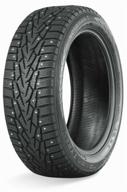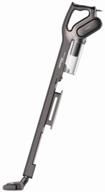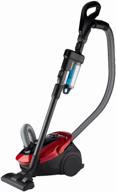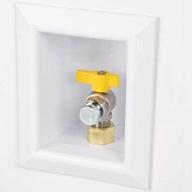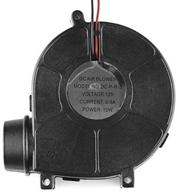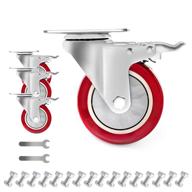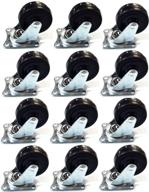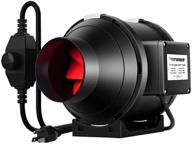Similar products
Common HVAC Problems and Solutions
Heating and cooling systems are complex machines that can encounter a variety of issues. Knowing the most frequent HVAC problems and their solutions can help homeowners address problems quickly when they arise.
AC Not Cooling Properly
During hot summer months, an AC unit not cooling properly is one of the most common issues. There are several possible causes:
- Dirty air filter - Restricted airflow can prevent the coils from absorbing heat properly. Replacing the filter can improve cooling.
- Refrigerant leak - Low refrigerant levels reduce the AC unit's ability to cool. Contact an HVAC technician to test for leaks and add refrigerant.
- Frozen evaporator coil - Ice on the coils blocks airflow. Turning the unit off to thaw and checking refrigerant levels can help.
Furnace Not Heating Properly
When outdoor temperatures drop, a furnace failing to emit enough heat will leave you feeling cold. Some reasons this can occur include:
- Dirty filter - Change the filter so airflow isn't obstructed.
- Pilot light is out - Furnaces with pilot lights require the gas flame be lit. Relight if needed.
- Faulty thermostat - If set correctly but the unit still doesn't heat right, the thermostat may need replacing.
High Energy Bills
Unexpectedly high electric and gas bills often point to an HVAC issue. Some causes include:
- Dirty system components like filters and coils prevent efficient operation.
- Improper refrigerant charge leads to wasted energy.
- Outdated equipment operates inefficiently. Upgrading to an ENERGY STAR model can help.
Strange Noises
Odd sounds like banging, whistling, and rumbling can indicate HVAC problems:
- Debris hitting fan - Remove debris blocking fan movement.
- Refrigerant flow noise - Refrigerant leaks make hissing/gurgling sounds. Have leaks repaired.
- Loose parts - Listen for rattling that could mean a loose cover or broken fan blade that needs replacing.
Addressing issues quickly keeps HVAC systems running smoothly. But for complex repairs, always contact a professional technician.
AC Not Cooling Properly
During the hot and humid summer months, an air conditioner that isn't cooling properly can make your home uncomfortable. There are several common issues that can cause poor AC performance.
Dirty Air Filter
A restricted air filter blocks airflow and reduces cooling efficiency. Over time, dirt, dust and other debris builds up on the filter screen. An AC unit with a dirty filter has to work harder to circulate the air. Replacing the filter allows air to flow freely and improves cooling.
- Check the filter every 30 days during peak cooling season.
- Replace disposable filters or clean reusable types regularly.
- Use a filter with a MERV rating between 8-12 for best results.
Top products in 🌡️ HVAC Equipment
Low Refrigerant Levels
The refrigerant is the substance in an AC unit that absorbs heat to provide cooling. If refrigerant levels are low, the cooling effect will be diminished. Causes of low refrigerant include leaks in the system or improper recharging after a repair. Contact an HVAC technician to test for leaks, top off refrigerant levels and repair any damage.
Frozen Evaporator Coil
If ice forms on the evaporator coil, it will block airflow and reduce cooling capabilities. A frozen coil is often caused by a dirty filter or low refrigerant. Turn off the AC unit and allow the ice to thaw. Then thoroughly clean or replace the filter and have refrigerant levels checked by a technician.
Another interesting products
Electrical Problems
Issues with electrical components like fuses, breakers, wiring and capacitors can affect AC performance. If they become damaged or corroded, the unit may not run properly. An HVAC technician can diagnose and fix any electrical issues.
Improper Use
Setting the thermostat at a drastically lower temperature than the current temp may freeze the evaporator coil. Closing too many vents also restricts airflow. Make sure to operate the AC unit within the proper guidelines.
Addressing cooling issues quickly provides relief on hot days. But for complex AC repairs, always contact a qualified HVAC technician.
Furnace Not Heating Properly
When outdoor temperatures start to drop, there's nothing worse than a furnace that isn't providing enough heat. Several common issues can cause a furnace to not heat properly.
Dirty Air Filter
A blocked air filter restricts airflow and reduces heating efficiency. Over time, dust, pet hair and other debris builds up on the filter screen. This forces the furnace to work harder to circulate the warm air.
- Check and replace the filter every 1-3 months during heating season.
- Use the correct filter size that matches your furnace model.
- Choose a filter with a MERV rating between 8-12 for optimal performance.
Pilot Light is Out
Older furnaces with pilot lights require the gas flame to be lit at all times to operate. If the pilot light goes out, the furnace won't heat. Carefully relight the pilot light following the manufacturer's instructions.
Faulty Thermostat
If the thermostat settings are properly adjusted but the furnace still doesn't reach the right temperature, the issue may be a faulty thermostat. Signs include incorrect temperature readings and unresponsive controls. Replace old or inaccurate thermostats.
Insufficient Gas Flow
Obstructions in the gas line, a weak gas valve or broken pressure regulator can restrict gas flow to the furnace burners. Have a technician inspect the gas system and make any necessary repairs.
Cracked Heat Exchanger
Cracks or holes in the heat exchanger will allow combustion gases to mix with heated air, creating a safety hazard. A technician can determine if the heat exchanger needs to be repaired or replaced.
Addressing heating problems right away provides warmth and comfort on cold days. Contact an HVAC professional for any complex furnace repairs.
High Energy Bills
Seeing a spike in your electricity and gas bills can be alarming. High energy costs are often a sign of an underlying issue with your HVAC system.
Dirty Air Filters
When air filters become clogged with dust, hair and other debris, it causes the HVAC system to work harder to keep your home heated or cooled. Replacing filters regularly allows air to flow freely and reduces strain on the system.
- Check filters every 30-90 days, more often during peak heating/cooling seasons.
- Use the right size and type of filter for your HVAC model.
- Upgrade to a pleated or HEPA filter for better air quality.
Low Refrigerant
Not having the proper refrigerant charge forces the AC unit to run longer to cool your home, driving up costs. Refrigerant leaks should be repaired and levels topped off by an HVAC technician.
Old Equipment
HVAC systems over 10 years old operate less efficiently as components wear down over time. Upgrading to a new ENERGY STAR certified system can reduce bills by up to 30%.
- Look for energy efficient models with a SEER rating of 14+ for AC and 80+ AFUE for furnaces.
- Take advantage of rebates on qualifying high efficiency equipment.
Improper Use
Setting the thermostat too low or high, forgetting to change filters, blocking vents and not scheduling maintenance can drive up energy consumption. Following proper use and care guidelines makes HVAC systems run more efficiently.
Addressing high energy bills quickly helps save on heating and cooling costs. An HVAC technician can diagnose issues and recommend needed repairs or upgrades.
Strange Noises from HVAC System
Hearing odd sounds coming from your HVAC system like banging, rumbling or whistling can be concerning. Unusual noises often indicate a problem that should be addressed.
Debris Hitting Fan Blade
If small objects like sticks, wires or insulation get sucked into the HVAC ductwork, they can strike the blower fan as it turns. This causes a repetitive banging or clicking noise. Removing debris that is obstructing the fan will stop this sound.
- Inspect ducts and use a vacuum to extract any loose material.
- Ensure all panels are fastened securely after servicing the system.
Refrigerant Flow Noise
Hissing, gurgling or high-pitched whistling noises from an AC unit may signal a refrigerant leak. As refrigerant escapes, it can cause turbulent air and vibration in the system. Identifying and sealing leaks is important to stop noise and improve cooling.
Loose Parts
Metal panels, coils, and other HVAC components can vibrate and rattle if they come loose. This could indicate missing or damaged mounting brackets, broken welds, bent fan blades or a poor fitting air filter. Inspecting the unit interior and securing all parts can eliminate rattling.
Imbalanced Motor
The blower motor can make a loud humming noise if the shaft is bent or bearings are worn. Realigning the shaft or replacing worn motor bearings restores smooth operation.
Be sure to schedule annual maintenance to keep your HVAC system running quietly and efficiently. Contact a technician for diagnosis and repair if strange noises arise.
Furnace Shutting Off Unexpectedly
There's nothing more frustrating than having your furnace shut down without warning on a cold winter day. Furnaces that switch off unexpectedly typically have an underlying issue that needs addressing.
Dirty Air Filter
A blocked air filter can cause the furnace to overheat and automatically shut off as a safety measure. Replacing clogged filters regularly prevents overworking the furnace:
- Inspect filters each month and replace when dirty.
- Use the manufacturer's recommended filter type and size.
- Upgrade to a pleated or HEPA filter for cleaner air.
Faulty Flame Sensor
The flame sensor monitors the pilot light or burner flame. If it malfunctions, the furnace will shut down thinking the flame is gone. A technician can determine if the sensor needs cleaning or replacement.
Faulty Thermocouple
The thermocouple tells the gas valve when to open and close based on heat. If it fails, the valve will close and shut off heat. Replacing a damaged thermocouple restores normal operation.
Tripped Circuit Breaker
Issues like shorts, power surges, and motor failure can trip the furnace circuit breaker. Locate the breaker box and switch the furnace breaker to "off" and then back "on" again to reset it.
It's important to have furnace shutdowns inspected by an HVAC technician, as they could indicate safety risks if left unaddressed. Don't hesitate to call for repairs if the problem persists.
Thermostat Malfunctioning
A thermostat is essentially the brain controlling your home's heating and cooling system. When it starts malfunctioning, it can cause a variety of issues.
Display Problems
If the thermostat screen is blank, flickers, or displays garbled text, there is likely an internal electrical issue. Try rebooting the thermostat by turning off power briefly. If that fails, replacement may be required.
Unresponsive Buttons
When the thermostat buttons and controls become unresponsive, it indicates a problem with the touch sensors or internal controls. Try cleaning the screen, checking batteries if applicable, and rebooting the thermostat.
Incorrect Temperature
A thermostat that reads the wrong indoor temperature will cause the HVAC system to heat or cool inaccurately. Check for poor wiring connections, low batteries or placement issues. Relocating the thermostat away from drafts, direct sunlight or other heat sources can improve accuracy.
Heating/Cooling Failure
If the system fails to turn on when the thermostat is set, the issue could be low batteries, wiring problems, a blown fuse or defective heating/cooling components. Inspection by an HVAC technician can determine the cause.
Replacing old or damaged thermostats keeps your home comfortable and system running efficiently. Select a programmable model for convenience and energy savings.
What is the Use of Amazon Prime for HVAC Equipment Buyers?
For homeowners and professionals who regularly purchase HVAC parts and equipment, an Amazon Prime membership provides several useful benefits:
Free Two-Day Shipping
Amazon Prime offers free two-day shipping on millions of eligible items, including many HVAC products. This allows you to get the parts you need quickly without paying more for faster delivery. Quick shipping is extremely helpful when you need something fast to get a customer's HVAC system back up and running.
Free One-Day and Same-Day Delivery
For HVAC equipment and parts available in your area, Prime provides free one-day shipping. In select metro areas, you can even get same-day delivery within just a few hours on qualifying orders of $35 or more.
Access to Exclusive Deals
Amazon Prime frequently offers special discounts and deals exclusively for Prime members. This includes lightning deals and savings events across all product categories, including HVAC equipment. You can take advantage of special low pricing on items you use often for work or personal HVAC needs.
Prime Early Access
New and popular HVAC products are sometimes available early for Prime members before regular customers. Early access helps you get the latest equipment and inventories right away.
Overall, an Amazon Prime subscription can provide significant time and money savings for both residential and professional HVAC buyers who shop online regularly.
HVAC Installer Tools List
Here is a list of HVAC installer tools that are commonly used by technicians:
- Battery-powered/cordless drill
- Electrical testers/multimeter
- Reciprocating saw
- Tape measure
- Flashlights and headlamps
- Wrenches
- Cutters
- Handheld thermometer
- Fuse puller
- Level
- Hammer
- Filter puller
- CO detector
- Crawl suit
- Respirator mask
- Screwdrivers
- Pillars
- Pipe wrench
- Cordless drill
- Extension cord
This list includes both basic hand tools and specialized HVAC devices that are essential for HVAC work. Technicians need to have these tools to solve even the most complex HVAC problems as efficiently as possible and give customers a highly professional service and experience.
Best HVAC Tools
HVAC technicians require a variety of tools to solve even the most complex HVAC problems as efficiently as possible and give customers a highly professional service and experience. Here are some of the best HVAC tools according to various sources:
- Housecall Pro recommends 27 best HVAC tools for service techs in 2023, including Klein Digital Angle and Gauge and Digital Leveler, Southwire 9" Lineman Pliers, and Wiss.
- Jobber lists 34 essential tools for HVAC work, including screwdriver set, power drill, handheld power saw, and pipe wrench.
- ServiceTitan provides a list of 46 essential HVAC tools for service techs, including nut drivers, gauges, wrenches, cutters, and flashlights.
- Servgrow lists the ultimate list of the best HVAC tools, including hammer, screwdriver, pliers, and tape measure.
- WorkWave suggests 20 essential HVAC tools for service techs, including hammers, screwdrivers, pliers, tape measure, crescent wrenches, flashlight, battery-powered drill, and pipe wrench.
- HVAC Tool Review recommends 10 HVAC tools under $30 worth buying, including precision 4 in 1 screwdriver, 1/4” SAE/Metric Drive socket Set, Cordura Ballistic Nylon Zipper Tool Bag, and kneeling pad.
These lists include both basic hand tools and specialized HVAC devices that are essential for HVAC work. Technicians need to have these tools to solve even the most complex HVAC problems as efficiently as possible and give customers a highly professional service and experience.





